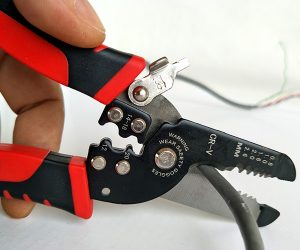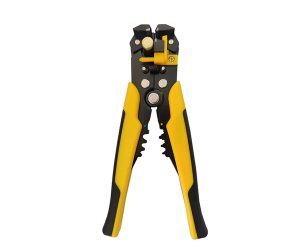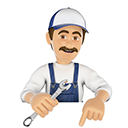Introduction
Hand tools have been an integral part of human civilization since the dawn of time. From the earliest stone axes to the modern, precision-engineered tools we use today, they have always played a vital role in shaping the world around us. Whether you’re a professional craftsman, a DIY enthusiast, or simply someone who enjoys tackling projects around the house, having a solid understanding of different types of hand tools and their uses is essential.
The right tools not only make the job easier but also enhance safety and efficiency. In this comprehensive guide, we will explore ten of the most common hand tools, discussing their uses, types, and how to maintain them properly. As a leading hand tools supplier in China, we believe in empowering our customers with the knowledge they need to make informed decisions about the tools they use every day.
This guide is designed to serve as a valuable resource for anyone looking to expand their understanding of hand tools. Whether you’re selecting tools for your workshop or simply curious about what each tool does, this article will provide you with detailed insights and practical advice.
Why Understanding Different Hand Tools is Important
Understanding the different types of hand tools and their specific uses can significantly improve your work quality. It allows you to choose the right tool for each task, thereby increasing your efficiency and ensuring the best possible results. For professionals, this knowledge can translate into better project outcomes and higher client satisfaction. For hobbyists and DIY enthusiasts, it can mean the difference between a successful project and a frustrating experience.
Moreover, knowing how to properly use and maintain your hand tools extends their lifespan, saving you money in the long run. Tools that are well cared for will perform better and last longer, making them a worthwhile investment for any workshop.
In this article, we will delve into the specifics of ten essential hand tools, providing detailed information on their types, uses, and maintenance tips. As a trusted hand tools supplier in China, we aim to equip you with the knowledge you need to get the most out of your tools.
Categories of Hand Tools
Hand tools are broadly categorized based on their function and application. Each category serves a specific purpose, and within each, there are various tools designed for particular tasks. In this section, we will explore five major categories of hand tools: wrenches, pliers, screwdrivers, hammers, and cutting tools. Understanding these categories will help you choose the right tool for your needs and ensure that you are using each tool to its fullest potential.
Wrenches
Description and Types
Wrenches are indispensable tools in any workshop or toolbox. They are primarily used for gripping, fastening, turning, and loosening objects such as nuts and bolts. There are several types of wrenches, each designed for specific tasks.
- Adjustable Wrench: Also known as a crescent wrench, this type of wrench features a movable jaw, allowing it to fit various sizes of nuts and bolts. It’s highly versatile and a must-have for any toolkit.
- Socket Wrench: This wrench uses a socket attached to a handle to turn fasteners. The sockets can be easily switched to fit different sizes of nuts and bolts, making it ideal for working in tight spaces.
- Combination Wrench: This tool has a box-end on one side and an open-end on the other. The box-end is useful for gripping the entire head of a bolt, while the open-end allows for quick adjustments.
- Torque Wrench: Designed to apply a specific amount of torque to a fastener, this wrench is essential for precision work where over-tightening could cause damage.
- Allen Wrench: Also known as a hex key, this small, L-shaped tool is used to drive bolts and screws with hexagonal sockets. It’s commonly used in assembling furniture and mechanical work.
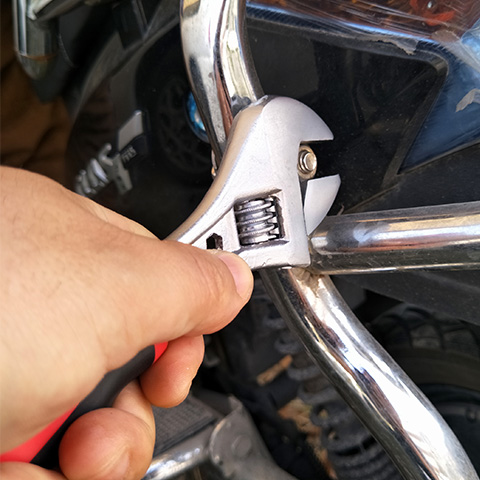
Common Uses
Wrenches are used in various applications across multiple industries. From automotive repair and plumbing to assembling machinery and furniture, wrenches are essential for tasks that involve tightening or loosening fasteners. For example, an adjustable wrench is perfect for tasks that require quick size adjustments, while a socket wrench is ideal for reaching into tight spaces where a standard wrench might not fit.
Safety Tips
Using wrenches safely requires proper technique and awareness. Always ensure that the wrench fits the fastener snugly to prevent slippage, which can cause injury or damage to the tool. When using a wrench, apply force smoothly and avoid sudden jerks. It’s also important to inspect your wrenches regularly for wear and tear. A worn wrench can slip and lead to accidents, so it’s essential to replace any tools that are no longer in good condition.
Pliers
Description and Types
Pliers are versatile gripping tools used for a wide range of tasks, from bending and cutting wire to holding objects firmly in place. The design of pliers allows for greater leverage, making it easier to manipulate materials with precision and control.
- Needle-Nose Pliers: These pliers have long, slender jaws that taper to a point, making them perfect for working in tight spaces or with small objects. They are commonly used in electrical work and jewelry making.
- Slip-Joint Pliers: These pliers have an adjustable pivot point, allowing the jaws to open wider. They are suitable for general-purpose gripping and bending tasks.
- Locking Pliers: Also known as vise grips, these pliers can be locked into position, allowing them to hold an object securely without continuous pressure from the user. They are often used in situations where a strong grip is needed for an extended period.
- Diagonal Pliers: Also known as wire cutters, these pliers are designed for cutting wire and small pins. The cutting edges are set at an angle, which allows for precise cuts in tight spaces.
- Linesman Pliers: These heavy-duty pliers are used by electricians for gripping, twisting, bending, and cutting wire and cable. They feature a robust design that can handle tough tasks.
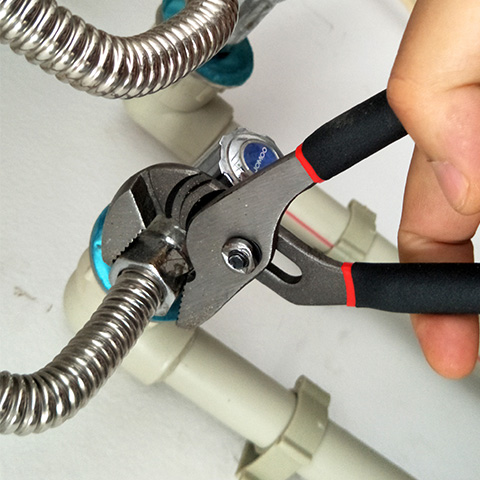
Common Uses
Pliers are used in a variety of fields, including electrical work, plumbing, automotive repair, and jewelry making. For example, needle-nose pliers are essential for intricate work that requires precision, such as bending wires in electronics. Locking pliers, on the other hand, are indispensable in metalworking and welding, where they can hold pieces securely in place during assembly.
Safety Tips
To use pliers safely, always choose the right type of pliers for the task. Using the wrong pliers can result in damage to the tool, the workpiece, or even cause injury. It’s crucial to apply force evenly and avoid using pliers on hard materials that could cause the jaws to slip. Additionally, maintaining a firm grip and keeping your fingers clear of the jaws will help prevent accidents.
Screwdrivers
Description and Types
Screwdrivers are among the most common hand tools, used for driving and removing screws. They come in various types, each suited to a specific kind of screw head.
- Flathead Screwdriver: This type has a flat, straight blade that fits into the simple slot of flathead screws. It is one of the oldest types of screwdrivers and is still widely used today.
- Phillips Screwdriver: Featuring a cross-shaped tip, the Phillips screwdriver is designed to fit into the cross slots of Phillips screws. It allows for greater torque and reduces the likelihood of slippage.
- Torx Screwdriver: This screwdriver has a star-shaped tip and is commonly used in electronics and automotive industries due to its ability to apply more torque without damaging the screw.
- Precision Screwdriver: These small screwdrivers are designed for delicate tasks, such as repairing electronics or eyeglasses. They often come in sets with various tips to handle different types of small screws.
- Hex Screwdriver: Also known as an Allen screwdriver, this tool is used for screws with hexagonal sockets. It’s common in furniture assembly and machinery.
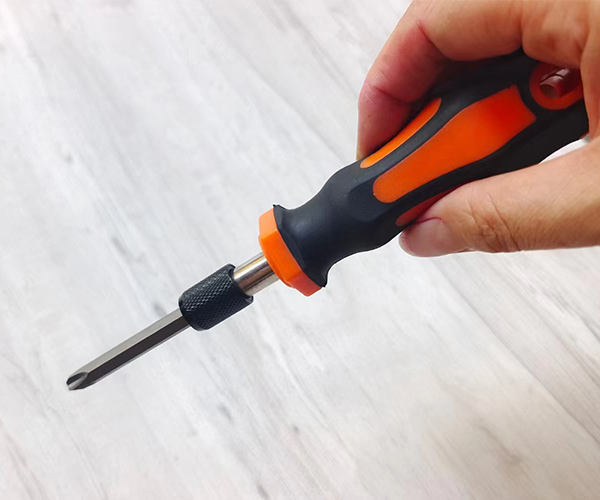
Common Uses
Screwdrivers are used in virtually every industry, from construction and manufacturing to electronics and automotive repair. For example, a Phillips screwdriver is essential for assembling furniture and appliances, while a precision screwdriver is crucial for tasks that involve small, delicate components.
Safety Tips
To ensure safety when using screwdrivers, always use the correct type and size for the screw. Using a mismatched screwdriver can strip the screw head and make it difficult to remove. Additionally, apply pressure in a controlled manner to prevent the tool from slipping. It’s also important to keep screwdrivers in good condition, as worn tips can easily slip out of the screw, leading to injury or damage.
Hammers
Description and Types
Hammers are fundamental tools used for driving nails, breaking objects, and shaping materials. There are various types of hammers, each designed for specific tasks.
- Claw Hammer: The most common type of hammer, featuring a flat striking surface on one side and a curved claw on the other for removing nails.
- Sledgehammer: A large, heavy hammer used for demolition work and breaking up concrete and other hard materials.
- Ball-Peen Hammer: Used in metalworking, this hammer has a rounded end (peen) for shaping metal and a flat end for striking.
- Dead Blow Hammer: This hammer is designed to minimize damage to the struck surface and to control the striking force with minimal rebound. It’s often used in automotive and woodworking applications.
- Mallet: A hammer with a soft head, typically made of rubber or wood, used for tasks that require a softer impact to avoid damaging the workpiece.
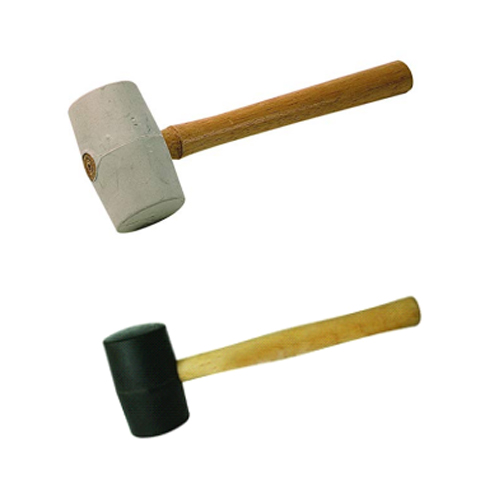
Common Uses
Hammers are used across a wide range of applications. For example, a claw hammer is indispensable in carpentry for driving nails and removing them when necessary. A sledgehammer, on the other hand, is used in heavy-duty tasks like demolition. The ball-peen hammer is particularly useful in metalworking for tasks such as shaping metal or setting rivets.
Safety Tips
Using hammers safely involves more than just swinging with precision. Always ensure that the hammer’s head is securely attached to the handle, as a loose head can become a dangerous projectile. Wear safety glasses to protect your eyes from flying debris, and choose the appropriate hammer for the task to avoid overexertion or damage to the material.
Cutting Tools
Description and Types
Cutting tools are designed for cutting various materials, from wood and metal to plastic and leather. They include a range of hand tools, each tailored for specific cutting tasks.
- Handsaws: Traditional cutting tools for wood, featuring a toothed blade that cuts on the push or pull stroke, depending on the saw type.
- Utility Knives: Versatile cutting tools with a retractable blade, used for slicing materials such as cardboard, plastic, and carpet.
- Tin Snips: Scissor-like tools designed for cutting sheet metal. They come in various forms, including straight, left-cut, and right-cut snips, each serving a different purpose.
- Hacksaws: Sawing tools with a fine-toothed blade stretched between a frame, used primarily for cutting metal pipes and rods.
- Chisels: Tools with a sharp, beveled edge, used for carving or cutting hard materials like wood, stone, or metal.
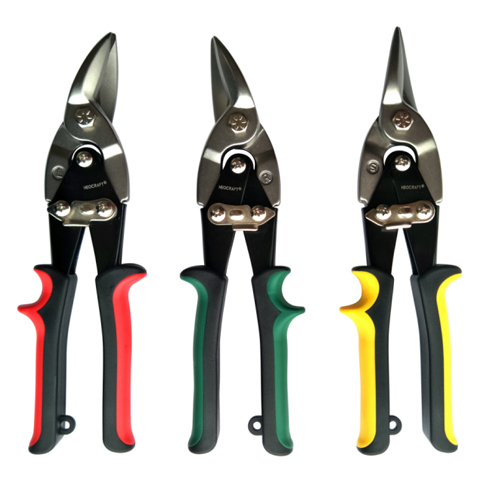
Common Uses
Cutting tools are essential in many trades. For instance, handsaws are commonly used in carpentry for cutting wood to size, while utility knives are indispensable in packaging and installation work. Tin snips are crucial in sheet metal work, allowing precise cuts in metal sheets for fabrication and installation.
Safety Tips
When using cutting tools, safety is paramount. Always use sharp blades, as dull blades require more force and are more likely to slip, leading to injury. Wear appropriate protective gear, such as gloves and safety glasses, to protect against cuts and flying debris. Additionally, ensure that you are using the right tool for the material you are cutting, as using the wrong tool can damage both the tool and the workpiece.
Maintenance Tips for Hand Tools
Maintaining your hand tools is crucial for ensuring their longevity and performance. Proper care can prevent rust, wear, and damage, allowing your tools to last for many years. Here are some general maintenance tips, as well as specific advice for different types of tools.
General Care Tips
Regular maintenance involves several key practices. First, keep your tools clean. After each use, wipe down your tools with a clean cloth to remove dirt, grease, and moisture. Moisture is particularly harmful as it can lead to rust, especially on metal tools. If your tools are exposed to moisture, make sure to dry them thoroughly before storing them.
Next, store your tools properly. Tools should be kept in a dry, organized space where they are protected from environmental factors that could cause damage. Using a toolbox or a pegboard is an effective way to keep tools organized and easily accessible.
Lubrication is another essential aspect of tool maintenance. Applying a light coat of oil to metal tools, particularly moving parts, can prevent rust and ensure smooth operation. This is especially important for tools like wrenches and pliers, where metal-on-metal contact is frequent.
Specific Maintenance for Different Tools
- Wrenches: Keep wrenches free of dirt and grime, and apply a light oil to prevent rust. Avoid using wrenches on nuts or bolts that are too tight, as this can damage the tool.
- Pliers: Regularly lubricate the pivot points of pliers to ensure they operate smoothly. Check the jaws for wear and replace the tool if the grip becomes ineffective.
- Screwdrivers: The tips of screwdrivers should be kept sharp and free of burrs. Worn tips can slip out of screws, damaging both the screw and the tool. If a screwdriver tip is damaged, it may be time to replace the tool.
- Hammers: Inspect the handle and head regularly for signs of wear or damage. If the handle is loose or cracked, it should be repaired or replaced immediately. For hammers with wooden handles, a light coat of linseed oil can help preserve the wood.
- Cutting Tools: Blades should be kept sharp to ensure clean cuts and reduce the risk of injury. For tools like saws and utility knives, replace blades when they become dull. For tools like chisels, regular sharpening with a whetstone is necessary to maintain a sharp edge.
Signs of Wear and When to Replace Tools
Even with proper maintenance, hand tools will eventually wear out. Knowing when to replace a tool is crucial for both safety and efficiency. Signs that a tool needs replacement include:
- Wrenches: If the jaws are worn or the adjustable mechanism no longer works smoothly, it may be time to replace the wrench.
- Pliers: When the cutting edges are no longer sharp or the jaws do not align properly, new pliers are needed.
- Screwdrivers: Worn or damaged tips that no longer fit screws properly are a clear sign that the screwdriver should be replaced.
- Hammers: A loose head or a cracked handle can lead to accidents. If the handle cannot be securely repaired, replace the hammer.
- Cutting Tools: Blades that are dull, chipped, or damaged should be replaced immediately to maintain safety and effectiveness.
By following these maintenance tips, you can ensure that your tools remain in good working condition for years to come, providing reliable performance and extending the life of your investment.
Conclusion
Hand tools are indispensable in various industries and for personal use. Understanding the different types of hand tools and their uses allows you to choose the right tool for the job, improving efficiency, safety, and the quality of your work. From wrenches and pliers to screwdrivers, hammers, and cutting tools, each tool has its unique role and requires specific care to maintain its functionality.
As a leading hand tools supplier in China, we are committed to providing high-quality tools that meet the needs of professionals and DIY enthusiasts alike. Whether you’re outfitting a new workshop or simply looking to upgrade your existing tools, understanding the uses and maintenance of these essential tools will help you make informed decisions.
Final Thoughts on Choosing and Using Hand Tools
Investing in quality hand tools is a decision that pays off in the long run. Not only do higher-quality tools perform better, but they also last longer and are often safer to use. When choosing tools, consider the specific tasks you will be performing and select tools that are designed for those tasks.
Additionally, proper use and regular maintenance are key to getting the most out of your tools. By following the guidelines provided in this article, you can ensure that your tools remain in top condition, ready to tackle any job with ease.
Call to Action
We invite you to explore our wide range of hand tools, each designed with precision and durability in mind. As a trusted hand tools supplier in China, we offer tools that meet the highest standards of quality. Whether you’re a professional craftsman or a DIY enthusiast, we have the tools you need to succeed. Visit our website to learn more about our products and to find the perfect tools for your next project.


